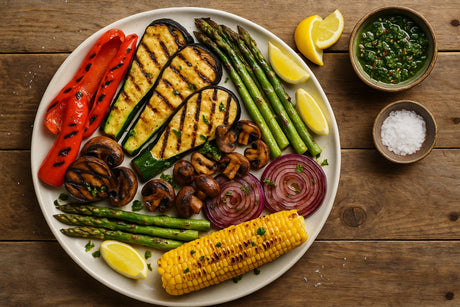
Best Vegetables for Grilling on an Arteflame | Full Guide
Learn the best veggies for grilling—plus times, temps, and pro tips—optimized for Arteflame heat zones for perfect char and flavor every time.
Salt used properly is an art in itself. First of all, salt has a greater impact on flavor than any other ingredient. According to chef Samin Nosrat and author of the book Salt Fat Acid Heat.
Most of us are a bit timid with our salt use. We’ve been indoctrinated with tales of salt use leading to poor health. While eating out poses these hazards, the use of salt in home cooking tends to be more conservative.
There are many different kinds of salt to choose from these days. Common table salt, or granular salt, is found in salt shakers everywhere. Table salt often contains anti-caking agents to prevent clots from forming, or dextrose, a form of sugar, to stabilize the iodine. Though neither of these additives are harmful, there’s no reason to add them to your food.
Iodized salt as a rule can make everything taste metallic. There is also kosher salt. This is traditionally used in koshering, the traditional Jewish process by which blood is removed from meat. Kosher salt contains no additives, and its taste is very pure. Chef Nosrat’s choice is Diamond Crystal Salt. This is because it readily adheres to foods and crumbles easily.
Morton Salt is a much denser salt and almost twice as salty by volume. So when using, make sure to note the specific brand that you purchase.
Sea salt is a salt that is left behind once the water evaporates. These can be quite pricey but they have a delightful texture, so try to use them in a way that stands out.
Using salt effectively in cooking is a culinary skill that enhances flavors, balances taste, and brings depth to dishes. Whether opting for table salt, kosher salt, or sea salt, understanding its effects can make a significant difference in home cooking. Experimenting with different salts and learning when and how to use them will elevate your dishes to the next level.
Arteflame XXL 40" Flat Top Grill - High Euro Base
Arteflame ONE30 — 30″ One Series Flat-Top Charcoal Grill & Fire Bowl (Single-Piece CORTEN Steel)